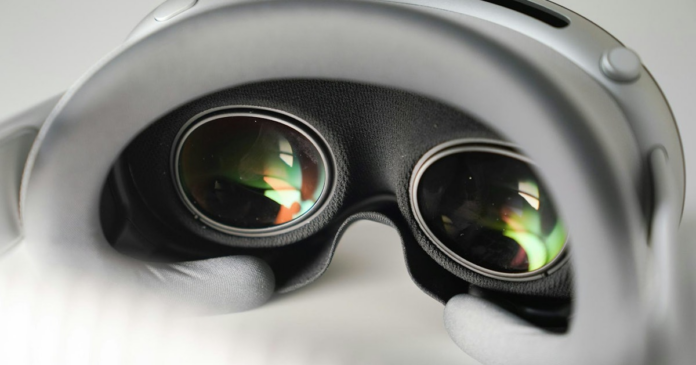One of the biggest selling points of Apple’s Vision Pro is the idea of a big virtual screen — a big-ass theater for gaming, watching movies, and increasingly, for watching live sports.
I say “increasingly” because immersive live sports for VR and mixed reality headsets is a fairly new category that hasn’t completely come into its own yet. And I say “yet” because esports might be the niche to change that.
Tencent’s Take On Immersive Video
Recently, Tencent showed off a demo of what esports will look like on a new app being introduced to the Vision Pro once it’s released in China, and much like a similarly theoretical version of watching F1, I think it could be exactly the type of use case to make immersive video feel worth it — probably even more worth it than traditional sports.
So what separates esports from the rest of the pack? Well, the “e” of course. While live sports could definitely benefit from a more immersive experience, there are a lot of moving parts in a live athletics event. Camera angles, technology, and the unpredictable nature of what happens on a real field in real life don’t exactly lend themselves to 3D video capture, which requires more intentional production methods and might not have the same framerate.
It’s one thing for F1, which operates on a fixed course with fewer split-second camera deviations, but for a sport like American football, which has a ton of different camera angles, the logistics become daunting. There’s likely a reason why Apple, even though it’s dipped its toes into immersive sports, hasn’t actually done the live part — so far, its immersive offerings for the Major League Soccer only apply to pre-recorded content.
Esports, however, don’t share the same constraints — putting someone in a game of League of Legends, for example, is just a matter of software. You could make the experience multi-cam, or POV, or even create a new perspective that combines live and virtual action to watch the game that you can only get by going immersive.
Big Audience, Big Payoff
Tencent’s vision for immersive esports is obviously just a demo right now, but it’s not hard to see why it could appeal to those who watch competitive games seriously. For one, gamers feel fairly likely to have less of a problem strapping a headset to their face and watching something — an aversion to screens and escapism isn’t exactly a quality you might generally ascribe to someone who puts 200 hours into Elden Ring.
There’s also another factor working in immersive esports favor: Competitive gaming is freakin’ huge. According to Statista, there were 215 million people watching esports in 2020, and that number is expected to grow significantly in coming years — projections suggest it could reach 323 million by 2025.
That’s obviously a big audience to tap into and enough incentive to offer an immersive esports experience that feels truly additive. There are still lots of hurdles, of course, just like with any immersive watching experience. For example, not everyone owns a headset — especially a $3,500 Vision Pro — and on top of that, asking someone to wear a headset for an extended period of time, isn’t nothing.
But with the right implementation, a big immersive canvas, and an avid audience, there’s also the chance that esports are the venue that immersive video has been waiting for. It might even be a potential reason that helps move more headsets. Maybe.
This Esports Concept Shows What Apple Vision Pro Could Do for Competitive Gaming
RELATED ARTICLES




